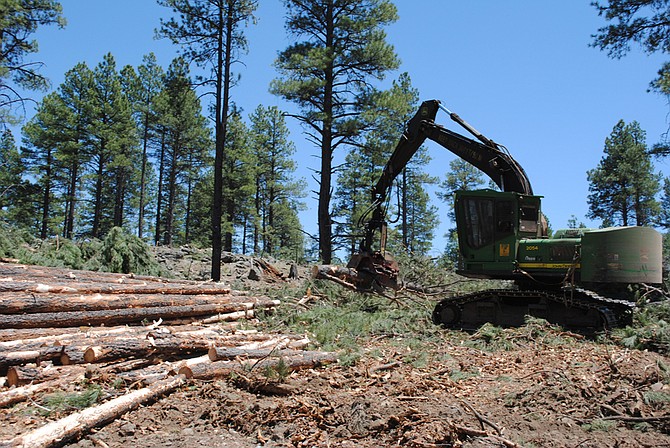The USDA Forest Service is proposing widespread forest thinning on our public lands across the West in a misguided attempt to reduce the impact of drought, fire, and insects (see National Forest Restoration Projects, Sierra Nevada National Forest Land Management Plan Revisions, news articles). These logging schemes are the latest in a series of Forest Service attempts to chainsaw their way out of a perceived problem. However, forests in the western United States have evolved to naturally self-thin uncompetitive trees through forest fires, insects, or disease. Forest fires and other disturbances are natural elements of healthy, dynamic forest ecosystems, and have been for millennia. These processes cull the weak and make room for the continued growth and reproduction of stronger, climate-adapted trees. Remaining live trees are genetically adapted to survive the new climate conditions and their offspring are also more climate-adapted, resistant, and resilient than the trees that perished. Without genetic testing of every tree in the forest, indiscriminate thinning will remove many of the trees that are intrinsically the best-adapted to naturally survive drought, fire, and insects.
Recent studies have demonstrated that genetic variation is high within populations of forest trees, with especially high diversity found at the lower latitudes and altitudes that form the edges of a species’ distribution. Local genetic and epigenetic variation makes some individuals naturally more likely to survive drought, fire, and insect outbreaks. This is because ecotones, or transitional areas, are where each species experiences the most extreme climate conditions that it can survive, the lowest elevation and latitude boundary. These natural edges are where trees with the most resistant and resilient adaptations are found. It is also where significant mortality is to be expected as part of the process where the distribution of tree species shifts north and uphill in our warming climate.
After forest fire or insect-caused mortality, green forest naturally regenerates without any need for expensive human interventions. Locally climate-adapted tree seedlings sprout and grow, and nitrogen-fixing shrubs and forbs replenish the soil and curb erosion. In the meantime, standing dead trees, snags, and logs provide critical food and shelter for many types of wildlife. Seedlings used in most Forest Service replanting efforts are bred for timber production, and although breeding programs are now looking for drought and temperature tolerance, there is a natural breeding program already underway that costs nothing and ensures the most locally adapted individuals will resist and persist as the climate warms.
Weather and climate data are painting a clear picture of warmer, drier summers across most of the western United States. Forest fires are strongly correlated with the Palmer Drought Severity Index where drier years make bigger fires, so people living in fire-prone areas need to be prepared for wildfire as an inevitable occurrence, and take all precautions to protect their homes with defensible space and ember-stopping attic vent screens. Thinning the forest within a hundred yards from structures and some minor fireproof retrofitting are the only practices proven to protect homes and communities from wildfire.
The West is getting drier than it was in the recent past, and that will require some adaptation, particularly in light of the significant recent human population growth in rural areas. We must also understand that recent fires are not unprecedented in size or severity as is often claimed by people who make money cutting our trees. The early 20th century sometimes saw 30 million acres of forest burn, and that was before widespread fire suppression, so fuel buildup is not the looming fire monster some folks who profit from logging have made it out to be. The world is an inherently dynamic and changeable environment, and generally the cost of fighting change is much more expensive than adapting to it.
Studies referred to are:
—
Dr. Derek E. Lee is an independent biologist. Born and raised in the rural West, Dr. Lee writes about the intersection of Western ecology and economy.


Derek:
Many thanks for the update and summary.